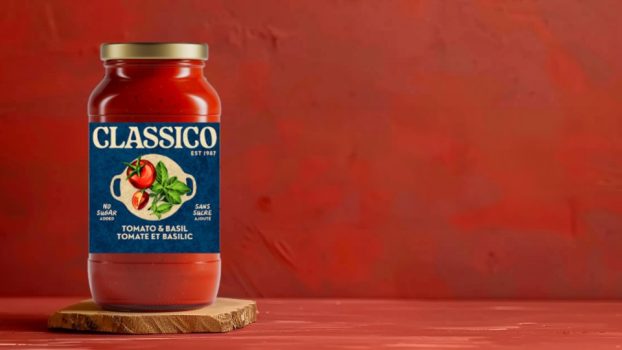Constant complaints of protectionism and polarization can make any agency type feel down. But as one of the winners at last month’s Coq d’ors show can attest, Montreal’s agencies can still craft truly outstanding creative.
This is one of those campaigns that only works in French. For Le Journal de Montreal’s effort to promote its classified advertising section, the creative prominently features the phone number: 888-8888. Simple enough. But say it fast – in French – and ‘huit’ sounds like ‘vite,’ making selling stuff fast the hinge on which the campaign hangs.
As much as the creative team and client liked the clever play on words, last year the campaign needed a fresh twist. ‘We wanted to renew this campaign, and Bos came up with this idea of picturing four people who were living their lives and telling a story,’ says Marie Claude Fichault, director of communications at Montreal-based Le Journal.
For inspiration, the Bos creative team of copywriter Félix Légaré and art director Jean-François Bernier went to the source and flipped open the classified section. ‘We’ve taken elements of mostly things you could read in the Journal,’ says Légaré.
The TV ads, which ran last year during the spring and fall (times when apartments are being rented and houses cleaned out), included four 15-second spots.
In ‘Recherche,’ a gangster-type character is reading the paper, only to find he’s wanted by the authorities. ‘Need to sell your house?’ the ad asks. ‘Call us at 888-8888.’ Other executions include: ‘Guitariste,’ where a singer is trashed in a newspaper review (‘Need to sell your guitar?’); ‘Camaro,’ where a gas-guzzling Camaro owner reads about skyrocketing fuel prices (‘Need to sell your car?’); and ‘Millionaire,’ where a man who already has everything finds the front page screaming that he’s won the lottery. All the ads are followed by the number and the paper’s logo.
The idea behind the campaign was simplicity itself: let the images do the talking. But that presented a real challenge when it came to brainstorming ideas for the radio component. So instead of using unusual images, the radio ads turned to audio idiosyncrasy, featuring an auctioneer-like spokesman selling off items. ‘The auction guy goes super fast,’ says Légaré. ‘You don’t get all the words but you do get the whole idea.’
While the product being flogged here is clearly space in the classifieds, this is really more of an image campaign for the paper in general, as the expense of a TV buy would suggest. Légaré calls it ‘an image campaign mixed with a campaign for classifieds, because all the visual elements were taken from the Journal,’ but then adds that ‘it’s more like an image campaign.’
While Le Journal initially asked that the creative team target readers typically perceived as lower income, Légaré says he tried to look past the demographic constraints. ‘For us, the target was everybody,’ he says. ‘If you do it well, it will be interesting for everyone. The first thing is to get noticed, to make people think and talk about it. That’s what advertising must do.’
Fichault agrees, noting that spikes in classified ad sales during the periods when the campaign ran attest to a winning strategy.
Along with picking up three Coq d’ors this year, the advertising is generally getting accolades from the industry.
‘I really like that campaign,’ says Raymond Boucher, president and CEO of BBDO Montreal. ‘It ties into the customer profile of that publication, sort of a mainstream kind of newspaper for regular folks. It’s outstanding, and it uses humour all the way. Very entertaining.’
For this fall, Le Journal has plans to continue with the campaign and is mulling over two options: extending the idea to other sections of the newspaper, or potentially producing sequel ads to find out how our gangster, guitarist, car owner and millionaire are doing now that they’ve sold all their possessions.























